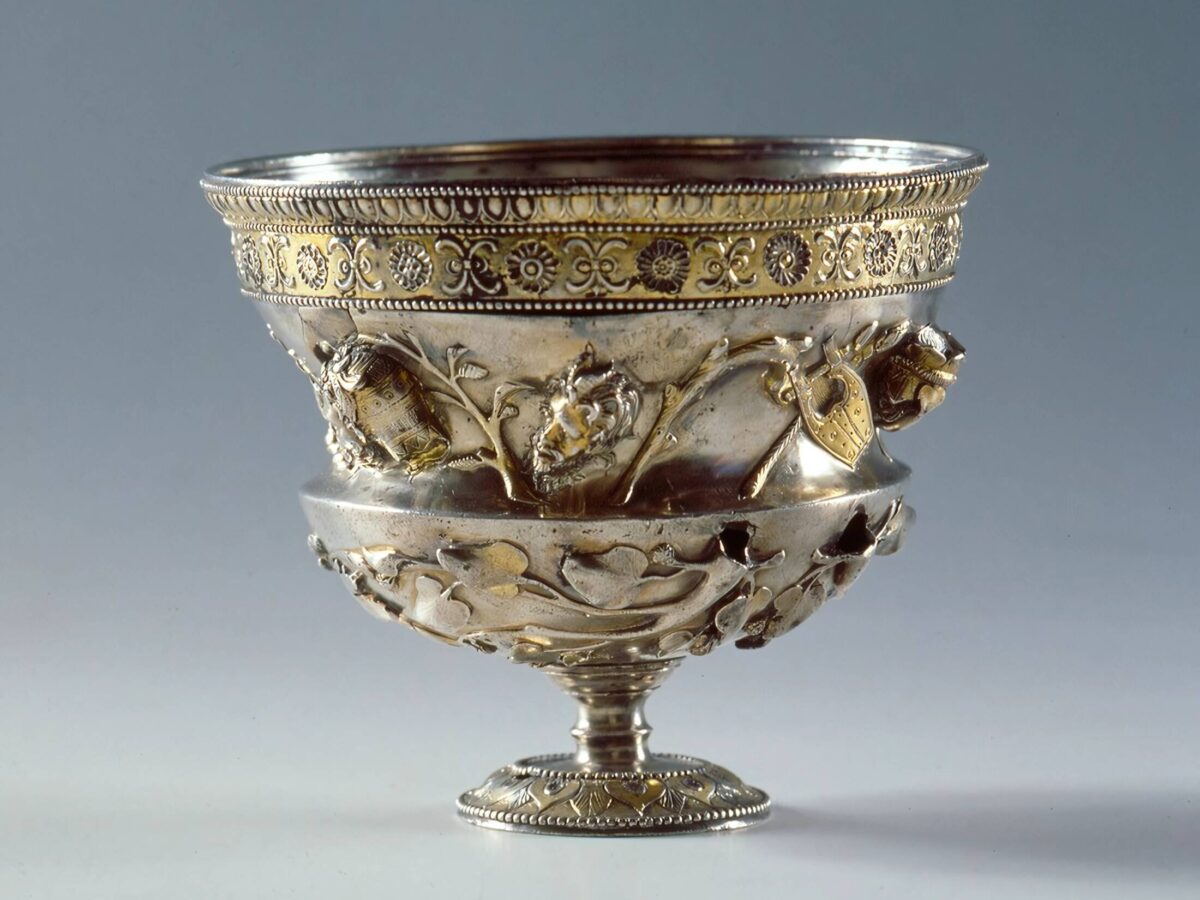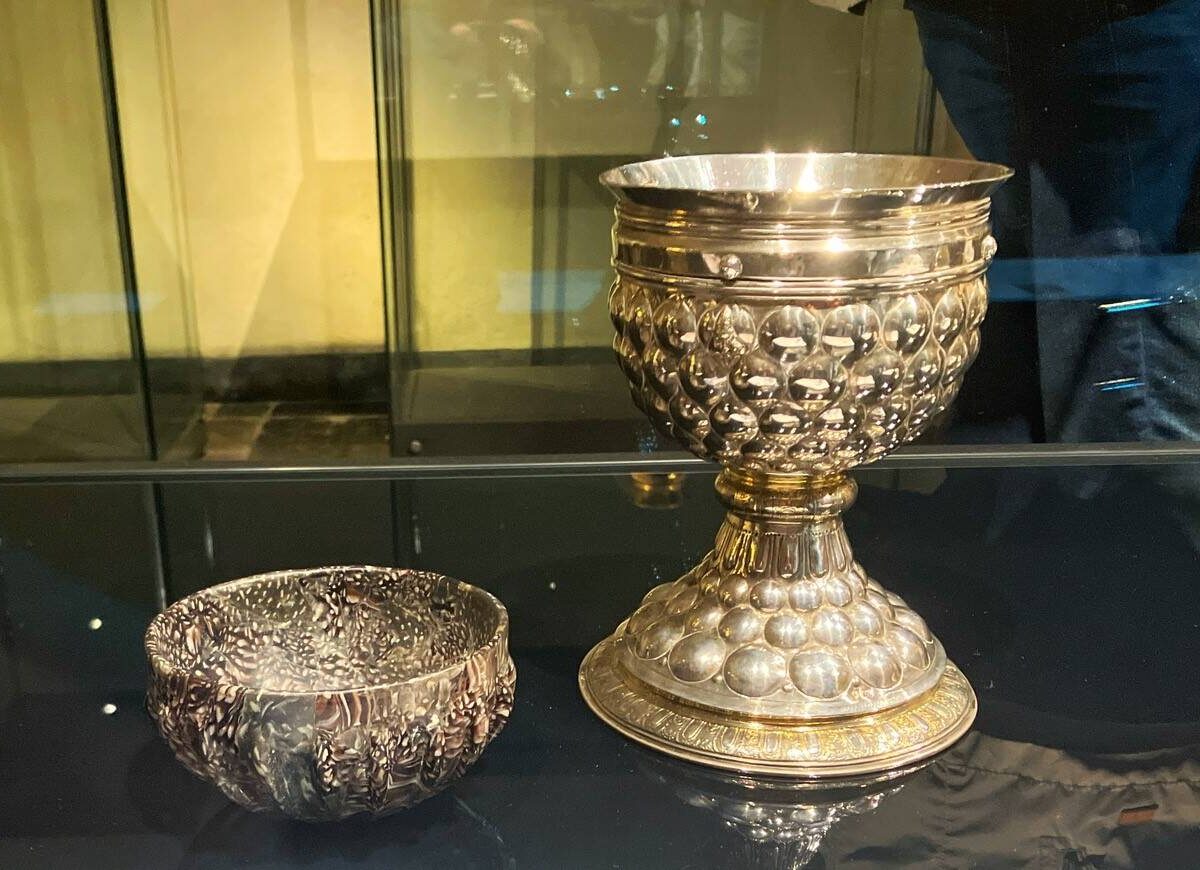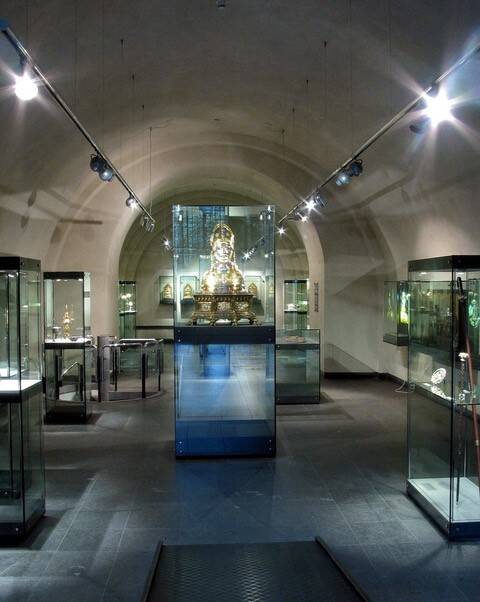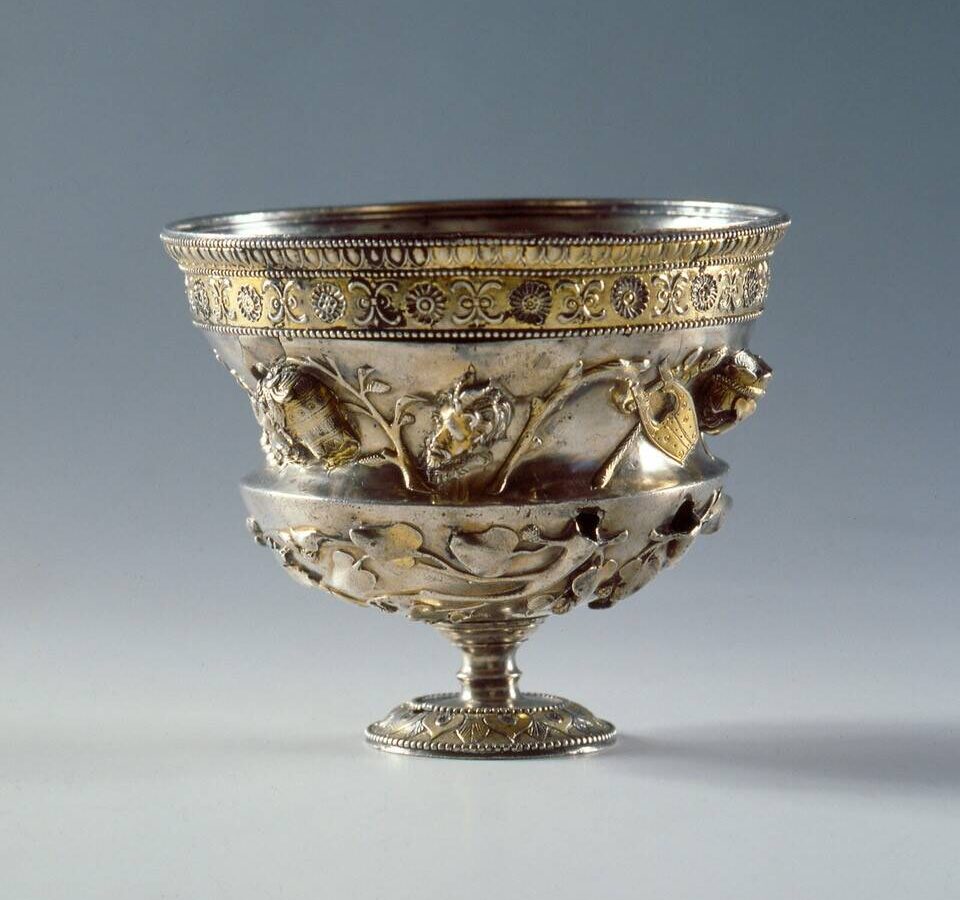The Cups of Servatius and Marcus Are True Masterpieces
Author: Harry Lindelauf
Photography: Museum Valkhof en Harry Lindelauf

One is temporarily visiting Limburg; the other can be seen there permanently. We are talking about two extraordinary drinking vessels that share one thing in common: they are true masterpieces from the Roman era.
The first masterpiece is the kantharos — the Greek name for a drinking cup dedicated to the god of wine. The Romans adopted both the idea and much of the design of this type of cup, using it to honor Bacchus, their version of the wine god.
This silver kantharos was cast in Italy between 50 BC and 50 AD. Initials engraved inside indicate that it once belonged to a man named Marcus Titinius. But then the mystery begins: how did this precious object end up in the River Meuse near Stevensweert? It was dredged up there in 1943 by a gravel excavator. The cup is on display at the Limburgs Museum in Venlo until February 2025, after which it will return to the Valkhof Museum in Nijmegen.

A Hidden Existence
The second masterpiece leads a more hidden life in Maastricht. In the treasury of St. Servatius Basilica, a Roman drinking cup or bowl is preserved. Like the kantharos, it dates from roughly the same period and originates from northern Italy at the beginning of the Common Era.
This vessel was made of semi-fluid, multicolored glass that was pressed into a mold.
The cup now leads a hidden life because it is enclosed within a silver chalice-shaped holder decorated with a pineapple motif. The silver chalice, dating from 1626 or 1627, was made out of necessity: the glass cup had broken, and the glued fragments were safely enclosed within the new metal casing.
Photo: A silver chalice protects the fragile drinking cup of Saint Servatius.
Why in the Treasury of Saint Servatius?
Naturally, the question arises: what is a Roman drinking cup doing in the treasury of Saint Servatius? The answer lies in the veneration of Saint Servatius. Around the 11th century, the life story of the saint was written down, and with it came a growing need for sacred objects that would allow pilgrims to experience the holy Servatius.
Vestments, a bishop’s staff, a reliquary bust, a coffin, and chalices were created. The Roman drinking cup was presented as the one Servatius supposedly carried with him on his travels. During the Heiligdomsvaart pilgrimages in Maastricht, the bowl was part of the Servatiana — the sacred objects displayed from the church’s gallery to the pilgrims gathered on the Vrijthof square.
Photo: About 20% of the original Roman glass has been lost; missing sections were filled in with synthetic material during the 1975 restoration.


The tradition of veneration persisted for centuries — and on June 12, 2025, the next Heiligdomsvaart will take place again.
In 1918, during the Spanish flu pandemic, Catholic citizens of Maastricht hoped for healing by drinking from the cup of Saint Servatius. The fragile vessel, held together by glue, could not withstand this and had to be repaired. Two locals undertook the task, and the cup was placed in a small portable display case.
In 1975, another restoration was required. A restorer used synthetic resin to glue and fill the broken glass pieces. Afterwards, the cup was returned to its silver chalice, where it continues to rest — remarkable and revered — in the basilica’s treasury.
Interestingly, it is now certain that none of the Servatius relics in the treasury were ever actually held by the saint himself — they are all several centuries too young.
The Roman cup, however, is the only Servatius item old enough that it could truly have belonged to him.
Photo: The cup is 105 mm high and 127 mm in diameter. Originally, it was part of a set of two cups with large handles. Photo: Valkhof Museum.

